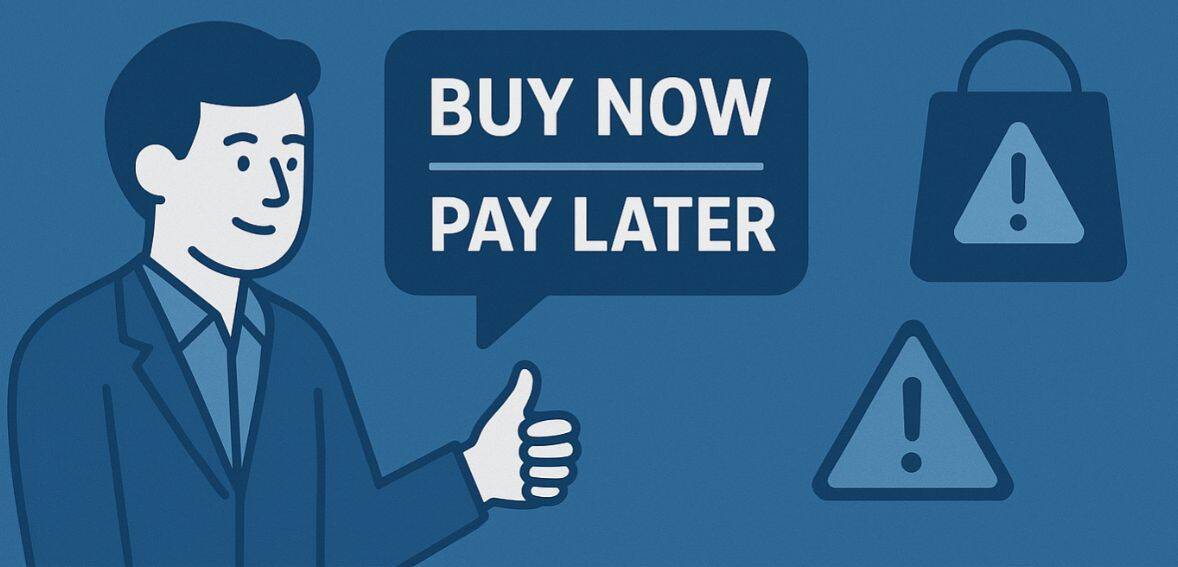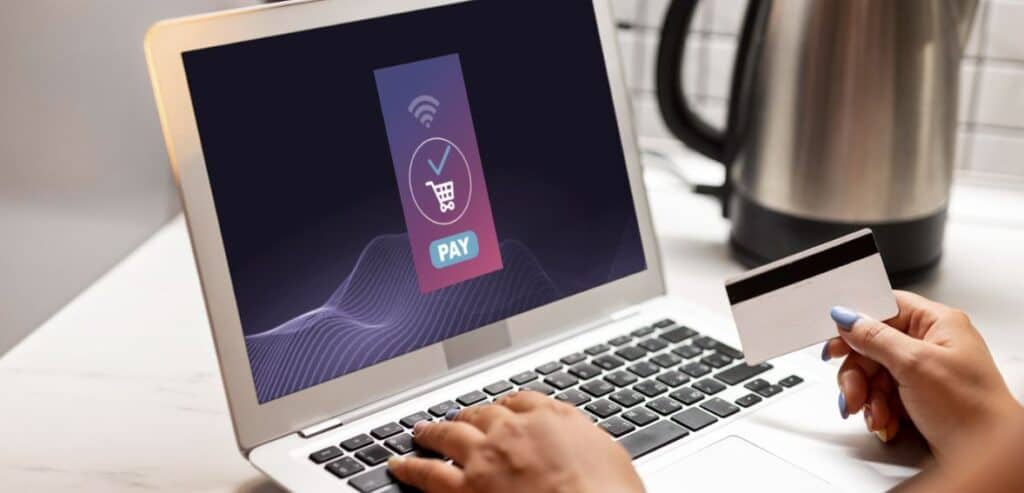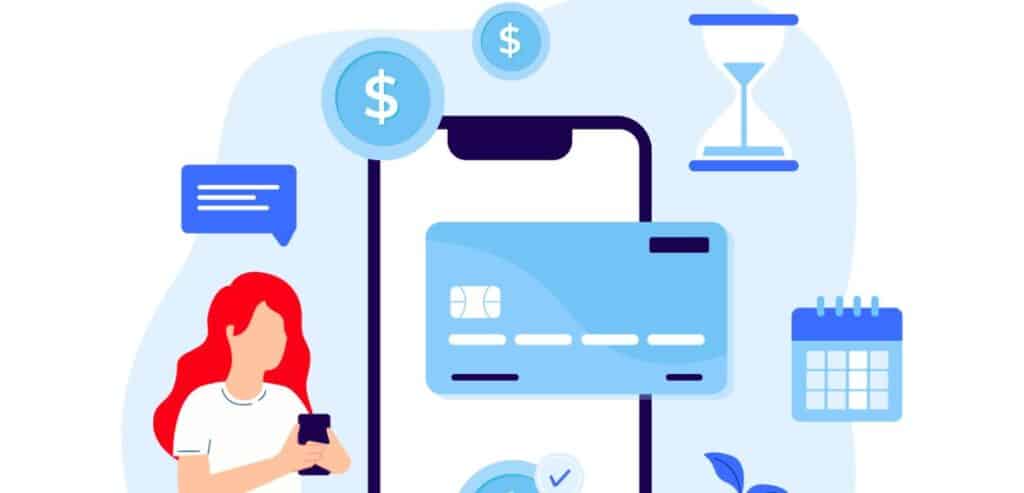
By merchantservices August 22, 2025
Customer expectations regarding payment flexibility are changing quickly in today’s dynamic retail environment. Traditional credit cards and installment plans, which have high fees and interest rates, are no longer acceptable to consumers. Rather, an increasing number of customers are choosing Buy Now, Pay Later (BNPL) options, which enable them to breakdown purchases into smaller, more manageable payments, often with no interest.
This trend has given merchants access to new markets and customers, but it also presents a unique set of risks and challenges that must be properly addressed. Because it meets the needs of contemporary consumer behavior, BNPL has emerged as one of the most talked-about innovations in commerce. Consumers desire instant access to products and services without having to pay for them up front, and retailers desire higher conversion rates and bigger basket sizes.
Merchants must weigh the possible drawbacks, which include higher chargeback risks and regulatory scrutiny, even though the advantages seem alluring. Any company thinking about providing its clients with this option must have a thorough understanding of both sides of BNPL.
The Evolution of Buy Now, Pay Later

The concept of BNPL is not wholly novel. Retail had already implemented layaway and installment plans in previous decades. What has changed is how accessible, streamlined, and widespread BNPL has become in the age of e-commerce and digital wallets. Today’s BNPL providers integrate seamlessly with online checkout systems, making it easy for customers to choose flexible payments with just a few clicks.
In contrast to conventional financing, the procedure frequently involves few credit checks and provides immediate approval, making the shopping experience easy for customers. BNPL has emerged as a popular substitute for credit cards among younger consumers, particularly Millennials and Gen Z.
Many of these consumers want access to goods without having to pay the full price, but they are also cautious about debt or concerned about interest fees. This generational shift in attitudes toward borrowing is one of the biggest forces driving the rise of BNPL, and merchants who tap into it can connect with a demographic that is shaping the future of retail.
The concept of BNPL is not wholly novel. Retail had already implemented layaway and installment plans in previous decades. What has changed is how accessible, streamlined, and widespread BNPL has become in the age of e-commerce and digital wallets. Learn more about how BNPL is transforming payments here.
Why Merchants Are Embracing BNPL
Businesses have rapidly come to understand that providing BNPL at checkout has a direct impact on consumer behavior. Customers are more likely to finish a purchase rather than leave their cart empty when they are aware that they can spread out their payments. Particularly for more expensive products like electronics, clothing, or furniture, this increase in conversion rates can be substantial.
BNPL can encourage customers to spend more per transaction in addition to decreasing cart abandonment. A $200 purchase may seem excessive up front, but it becomes more psychologically manageable if it can be divided into four $50 installments. Revenue growth is directly impacted by the merchant’s ability to make products appear more affordable without actually lowering the price.
Smaller merchants can also compete with larger ones by providing BNPL. Customers are beginning to expect flexible payment options, and businesses that fail to offer them risk losing sales to competitors who do. By aligning with this expectation, merchants can position themselves as customer-focused and adaptable to modern buying preferences.
The Customer Loyalty Connection

BNPL has a significant impact on how customers view merchants, in addition to sales metrics. Flexibility in payment shows customers that a company is prepared to accommodate their financial situation. This degree of empathy fosters loyalty and trust in an economy with tight budgets and fluctuating purchasing power. When a customer feels encouraged to make a significant purchase, they are more likely to do so again in the future.
In competitive markets where differentiation can be challenging, this loyalty is especially valuable. Merchants build more solid, long-lasting relationships with their customers by offering not only goods but also payment options that ease financial strain. This trust eventually results in recurring business and favorable word-of-mouth referrals.
The Risks Beneath the Surface
BNPL has risks despite all of its benefits. The problem of customer default is one of the main worries for retailers. Even though BNPL providers usually bear the financial risk of nonpayment, merchants may still be impacted by the indirect effects. Customers who accrue excessive debt from several BNPL providers may become dissatisfied, dispute, and damage the businesses’ reputations.
The possibility of increased return rates presents another difficulty. Consumers who experience less financial pressure during the buying process might act more impulsively, which increases the likelihood of buyer’s regret. Increased returns and the processing expenses related to them may result from this. Retailers must make sure that their logistics and return policies can accommodate these possible increases.
Another factor to consider is fraud. Although BNPL’s quick approval process is attractive to good clients, it can also draw dishonest people. Fraudulent purchases might evade detection with little upfront verification, leaving retailers to cope with chargebacks or lost merchandise. This risk emphasizes the necessity of strong fraud detection systems and collaborations with trustworthy BNPL suppliers.
Navigating the Regulatory Landscape

Regulators worldwide are keeping a closer eye on BNPL as its popularity continues to rise. Governments are being pushed to create stricter rules regarding the offering of BNPL due to worries about consumer debt, transparency, and data privacy. This entails keeping up with changing laws and being ready for increased scrutiny for retailers.
Companies that don’t keep an eye on these changes run the risk of fines, harm to their reputation, or even limitations on how they can promote BNPL options. Merchants seeking to steer clear of regulatory pitfalls must be proactive, collaborate with BNPL providers that place a high priority on compliance, and make sure that customers are fully informed about repayment terms.
The Emotional Side of Payment Choices
Payment is one of the most emotional aspects of the transaction, and trust in commerce does not just depend on the products but also on the experiences that surround them. Customers become frustrated, and trust rapidly erodes when they feel uncertain, whether as a result of convoluted procedures, unforeseen costs, or declined cards.
However, smooth payment processes reassure clients that their money, time, and effort are appreciated. Customers can feel taken care of with something as basic as an obvious security measure, a transparent receipt, or a clear refund policy.
What turns a one-time customer into someone willing to return time and time is this emotional reassurance. It’s about trust going forward, not just about money moving between accounts.
Balancing Benefits with Long-Term Strategy
Short-term revenue gains alone should not be the basis for adopting BNPL. The long-term effects on their customer base, brand, and operational procedures must be considered by merchants. A careful strategy includes choosing BNPL providers who share the company’s values, making sure that payment options are clear, offering flexible options like scheduled payments, and keeping an eye on the effect on customer retention and satisfaction.
Some companies may use BNPL as a means of reaching younger, cost-conscious consumers, while others may use it to lower the price of more expensive goods. Using BNPL as a tool to improve customer experience without relying too much on it or ignoring potential drawbacks is crucial in both situations.
The Future of BNPL in Merchant Services
It is expected that BNPL will change from its current state in the future. BNPL providers may soon provide even more individualized payment plans that are catered to the spending habits and behaviors of specific customers, thanks to developments in artificial intelligence and data analytics. BNPL will become an even more seamless aspect of the shopping experience through integration with digital wallets, loyalty programs, and omnichannel experiences.
At the same time, there will probably be more competition among providers, which will give merchants more options but also necessitate a careful assessment of terms and features. BNPL will evolve from a desirable option to a necessary component of the payment ecosystem as consumer expectations continue to rise. Companies that strategically adopt it will benefit, while those that don’t run the risk of slipping behind.
Payment Methods as a Reflection of Brand Values

A business’s payment policies often reveal as much about its values as its advertising or customer support initiatives. Providing customers with safe and flexible payment options shows that the company is inclusive and flexible, respecting their needs and way of life.
For example, a company that accepts contactless payments or digital wallets conveys that it values modern expectations and convenience, whereas a company that continues to accept traditional payment methods reassures clients who would rather be familiar.
Every payment structure decision shows how well a company knows and values its customers. These subtle signals gradually gain credibility and strengthen the notion that the brand cares about the customer’s journey in addition to making sales.
Conclusion
For merchants, Buy Now, Pay Later poses both a significant opportunity and a difficult problem. On the one hand, it provides a means of increasing sales, drawing in younger clients, and growing loyal customers by conforming to changing consumer demands. Conversely, it presents risks related to fraud, regulation, defaults, and the operational burden of increased return rates.
Merchants can transform this trend into a source of trust and growth by approaching BNPL with well-defined strategies, solid partnerships, and a focus on compliance. Those who jump in without thinking through the risks might end up with unexpected consequences. BNPL is ultimately about understanding how flexible payments impact customer relationships, brand reputation, and long-term business stability, not just about providing flexible payment options.
Leave a Reply